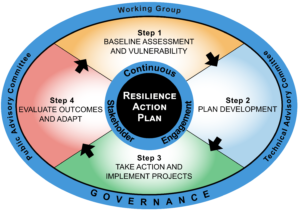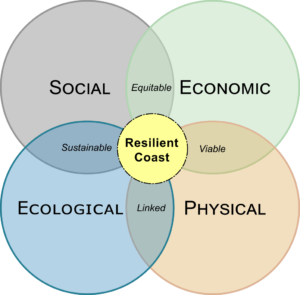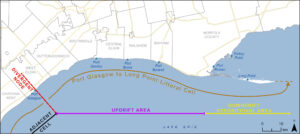Frequently Asked Questions
An external public engagement professional from outside of the region reviewed the applications for the PAC along with the Project Manager from the Long Point Biosphere Region.
The applicants were asked to provide background information, including their location relative to the project area, their relationship to the coast (e.g., where live, work, recreate, etc.), their interest in the project and the skills they would bring to the committee.
A number of steps were taken to ensure a fair process in selecting final PAC members. These steps included:
- Blind review of applications with clearly defined criteria for scoring (names removed from the application).
- Discussion and comparison of blind scores were completed.
- Review of scored applications by the Working Group members, a group that includes representation from across the project area.
In the final step, the Working Group selected the top scoring applicants to create a group that was balanced with respect to geographic representation and diversity in terms of coastal experience and project-relevant interests and skills at their March 20th, 2025 meeting.
A link to the draft Terms of Reference was provided on the website with the application information. Member expectations when interacting with other PAC members and other project contributors were clearly outlined. If the actions of applicants have not been consistent with these commitments, they were removed from the selection process.
Reach out to the Project Manager, Sarah Emons, from the Long Point Biosphere Region (conservation@longpointbiosphere.com).
A Technical Advisory Committee comprised of independent coastal engineering and coastal geomorphology experts from universities and research laboratories will review the technical work on coastal processes and the sediment budget. First Nations are being engaged for their traditional ecological knowledge along with local restoration experts. Please refer to the Governance tab for additional information.
The project will be managed by the Long Point Biosphere Region and guided by a Working Group, a Public Advisory Committee, and Technical Advisory Committee of independent experts. Public engagement and consultation will be continuous as highlighted in the Governance Model. The public and stakeholders will be invited to community workshops, represented on the Public Advisory Committee, and receive updates via the project website (https://northshoreresilience.ca ).

Project governance includes a Working Group, a Public Advisory Committee, and a Technical Advisory Committee
Develop Technical and Scientific Knowledge: Collect physical data and develop a sediment budget and transport model to determine how and where sand and gravel move in the nearshore of the coast between Port Glasgow and Long Point.
Complete Dune Restoration Projects: From 2024 to 2027 we will build coastal resilience through dune restoration. Sand dunes form at the back of beaches when sand is trapped by beachgrass and other native plants. Healthy dunes create a barrier against natural coastal hazards, such as flooding and erosion, and improve habitat.
Produce a Resilience Action Plan: Develop a Resilience Plan that integrates the four dimensions of a resilient coast: social, economic, environmental, and physical processes as highlighted in Figure 2. The technical and scientific work completed will inform the management options developed to build resilience along the coast. The Action Plan will be co-developed by the Working Group, the Public Advisory Committee, community members at large and reviewed by the Technical Advisory Committee.

Balancing social, economic, environmental and physical processes promotes a long-term and sustainable approach to improve coastal resilience
No. This is not a regulatory or legislative project. Our goal is to improve coastal resilience with willing community partners and landowners from Port Glasgow to Long Point.
No. This funding is focused on technical investigations in the littoral cell, beach and dune restoration, and the development of a Resilience Action Plan that focuses on long-term nature-based approaches to increase coastal resilience.
The project area extends from Port Glasgow to Long Point, along the north shore of Lake Erie. This area is known as a littoral cell or sediment cell, which is a coastal segment that defines the supply, longshore transport, and deposition of sand and gravel. Within a littoral cell, there are erosional areas (e.g., bluffs), a net direction of longshore sediment transport, and a downdrift area where sediment accumulates (e.g., beaches). Refer to the map of the project area and littoral cell boundaries.

The project area extends from Port Glasgow to Long Point
The project was funded by a $900,000 grant from the Canada Water Agency (formerly Environment and Climate Change Canada), under the Great Lakes Freshwater Ecosystem Initiative, a targeted program to protect the health of coastal areas. The member organizations of the Working Group are providing some additional cash funding and in-kind staff support.
